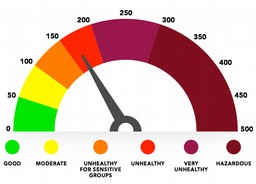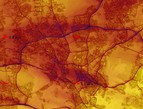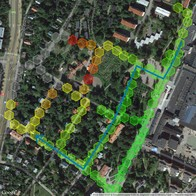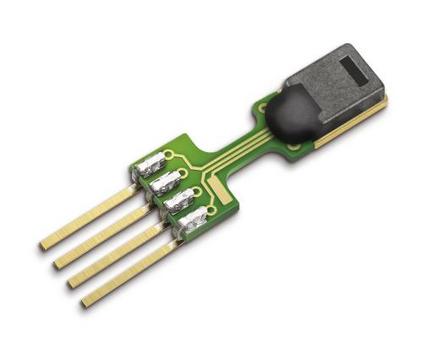The significance of air pollution and the problems associated with it are fueling deployments of air quality monitoring stations worldwide. The most common approach for air quality monitoring is to rely on environmental monitoring stations, which unfortunately are very expensive both to acquire and to maintain. Hence environmental monitoring stations are typically sparsely deployed, resulting in limited spatial resolution for measurements. Recently, low-cost air quality sensors have emerged as an alternative that can improve the granularity of monitoring. The use of low-cost air quality sensors, however, presents several challenges: they suffer from cross-sensitivities between different ambient pollutants; they can be affected by external factors, such as traffic, weather changes, and human behavior; and their accuracy degrades over time. Periodic re-calibration can improve the accuracy of low-cost sensors, particularly with machine-learning-based calibration, which has shown great promise due to its capability to calibrate sensors in-field. In this article, we survey the rapidly growing research landscape of low-cost sensor technologies for air quality monitoring and their calibration using machine learning techniques. We also identify open research challenges and present directions for future research.
翻译:空气污染的重要性及其相关问题正在推动在全世界部署空气质量监测站。空气质量监测最常用的方法是依赖环境监测站,不幸的是,这些监测站的获取和维持费用非常昂贵。因此,环境监测站的部署通常很少,造成测量的空间分辨率有限。最近,低成本空气质量传感器的出现,成为可以改进监测的颗粒度的替代办法。但是,使用低成本空气质量传感器带来了若干挑战:它们受到不同环境污染物之间的交叉敏感度的影响;它们可能受到交通、天气变化和人类行为等外部因素的影响;它们的精确度会随着时间的推移而下降。定期重新校正可以提高低成本传感器的准确性,特别是机械-学习校准,这显示了由于它有能力在实地校准传感器的巨大前景。在文章中,我们调查了利用机器学习技术进行空气质量监测及其校准的低成本传感器技术迅速增长的研究前景。我们还查明了公开的研究挑战,并提出了未来研究的方向。


















